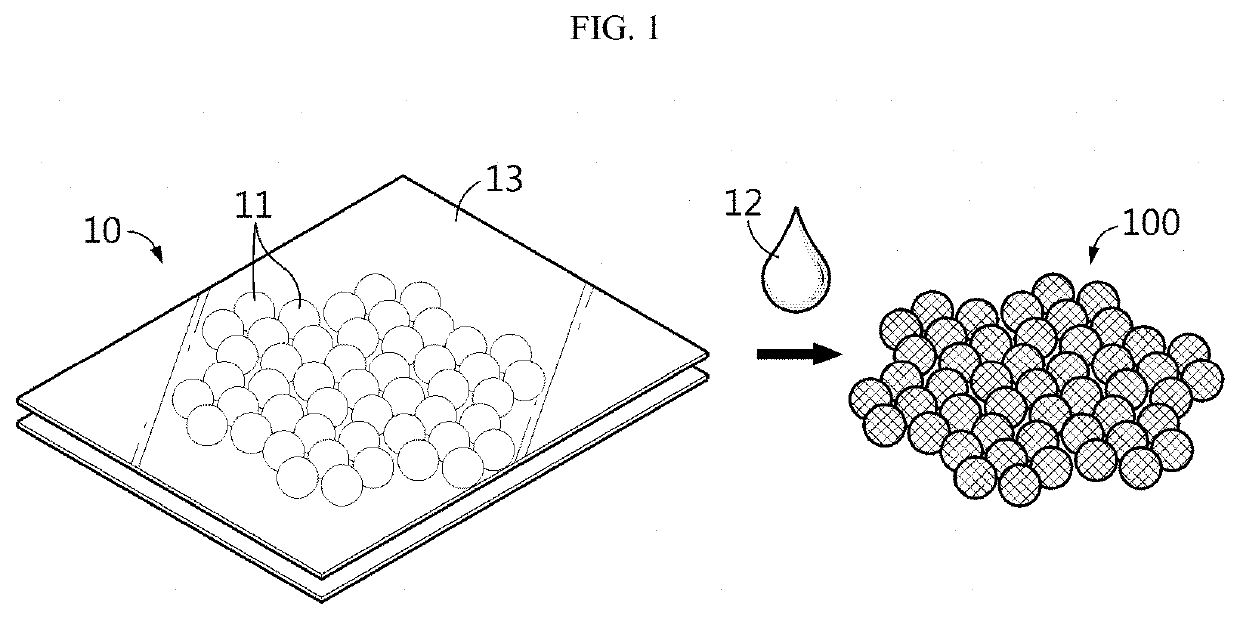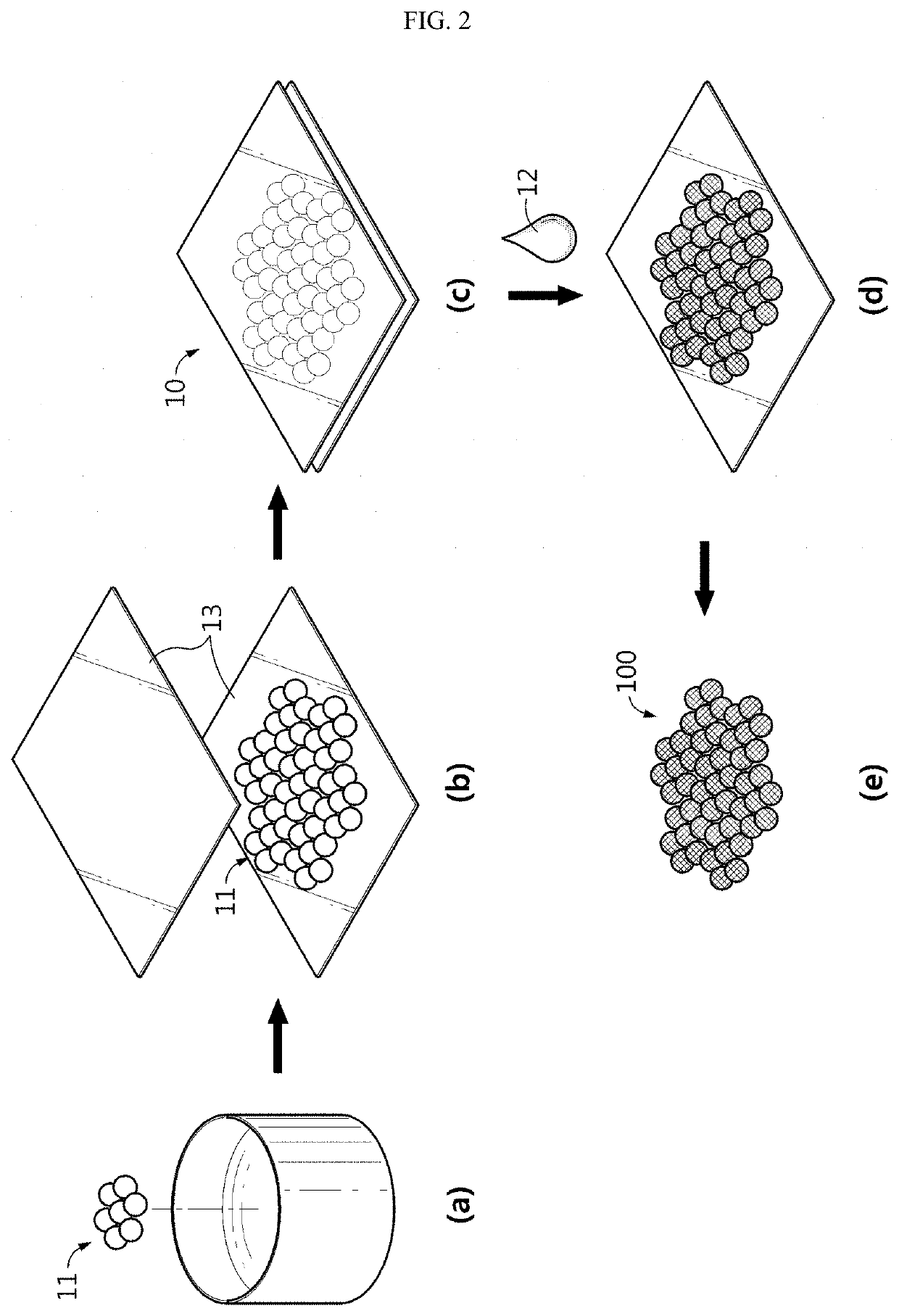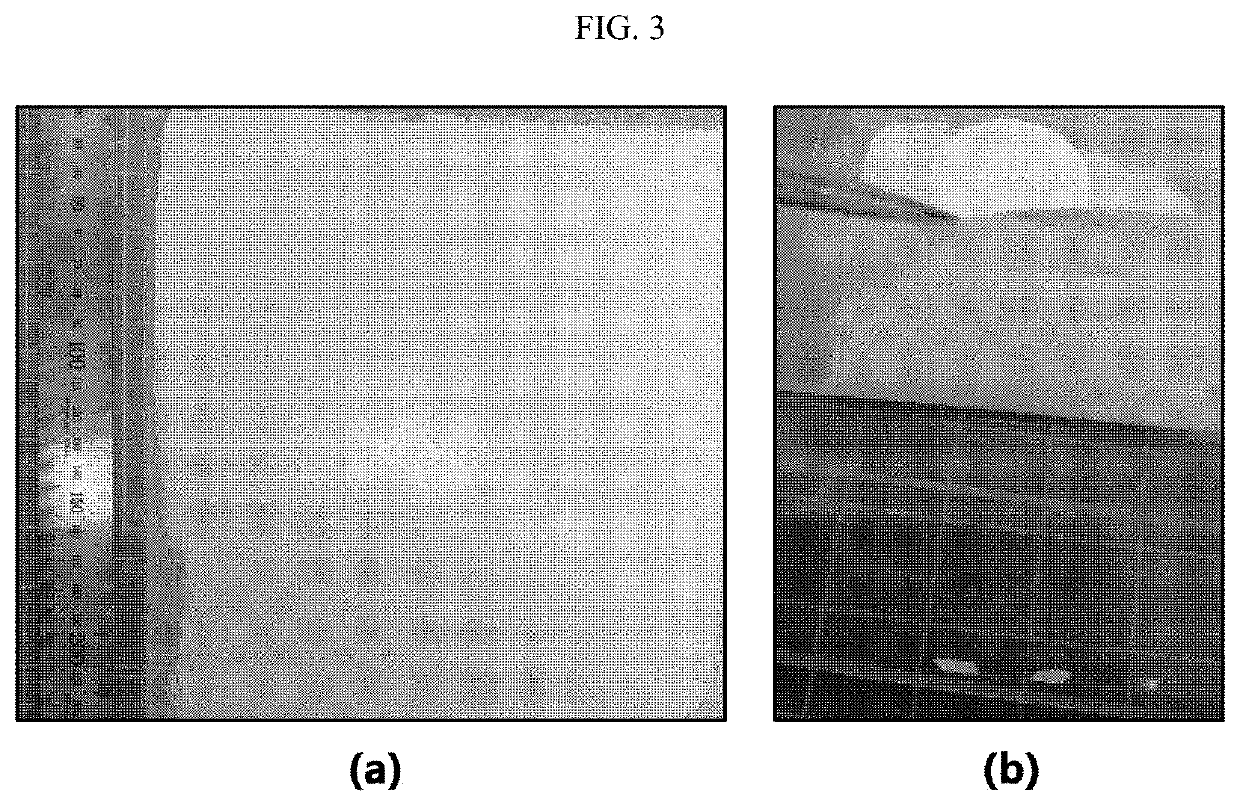Solid-liquid hybrid electrolyte membrane, method for manufacturing the same and lithium secondary battery including the same
a technology of hybrid electrolyte and electrolyte membrane, which is applied in the direction of electrochemical generators, cell components, cell components, etc., can solve the problems of loss of energy density, degradation of performance, overheating or explosion, etc., and achieves low resistance, improved mechanical strength, and favorable to porosity and pore channel formation
- Summary
- Abstract
- Description
- Claims
- Application Information
AI Technical Summary
Benefits of technology
Problems solved by technology
Method used
Image
Examples
example 2
[0122]A solid-liquid hybrid electrolyte membrane was obtained in the same manner as Example 1, except that the solid polymer particles were not used in the form of powder-type but in the form of a dispersion including polyphenylene sulfide (average particle diameter: 10 μm) as solid polymer particles dispersed in ethanol as a solvent at a concentration of 1 g / 2 mL, and 3 mL of the dispersion was applied to a release-treated polyethylene terephthalate (PET) film, followed by drying.
[0123]Particularly, the dispersion was applied to and dried on the release-treated polyethylene terephthalate (PET) film to obtain a preliminary porous structure including polyphenylene sulfide dispersed therein. Herein, the preliminary porous structure had a thickness of 300 μm.
[0124]Next, the preliminary porous structure was pressurized by passing it through a roll press having a gap of 200 μm between a first roller and a second roller facing the preliminary porous structure to obtain a porous structure ...
example 3
[0126]A solid-liquid hybrid electrolyte membrane was obtained in the same manner as Example 2, except that 3 mL of the dispersion according to Example 2 was applied to and dried on the release film, and the resultant preliminary porous structure was passed through a roll press having a gap of 150 μm between a first roller and a second roller.
[0127]Herein, the preliminary porous structure had a thickness of 300 μm, and the resultant porous structure had a thickness of 150 μm. In addition, the resultant solid-liquid hybrid electrolyte membrane had a thickness of 150 μm.
example 4
[0128]A solid-liquid hybrid electrolyte membrane was obtained in the same manner as Example 2, except that 10 μL of the dispersion according to Example 2 was applied to and dried on the release film.
[0129]Herein, the preliminary porous structure had a thickness of 300 μm, and the resultant porous structure had a thickness of 200 μm. In addition, the resultant solid-liquid hybrid electrolyte membrane had a thickness of 200 μm.
PUM
| Property | Measurement | Unit |
|---|---|---|
| thickness | aaaaa | aaaaa |
| molecular weight | aaaaa | aaaaa |
| particle diameter | aaaaa | aaaaa |
Abstract
Description
Claims
Application Information
 Login to View More
Login to View More - R&D
- Intellectual Property
- Life Sciences
- Materials
- Tech Scout
- Unparalleled Data Quality
- Higher Quality Content
- 60% Fewer Hallucinations
Browse by: Latest US Patents, China's latest patents, Technical Efficacy Thesaurus, Application Domain, Technology Topic, Popular Technical Reports.
© 2025 PatSnap. All rights reserved.Legal|Privacy policy|Modern Slavery Act Transparency Statement|Sitemap|About US| Contact US: help@patsnap.com



